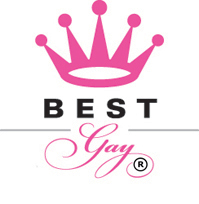Wieliczka Salt Mine outside of Krakow
I have not been to Poland yet – but I would like to go one day. I am told it is not the most gay friendly place on Earth. Someone from Krakow told me, “Being gay in Poland is like being a Michael Bolton fan at a metal
concert: it’s looked down on, not something you announce in a crowd of
skinheads, and might get you beaten up.”
Historically, unlike in many other Central and Eastern European
countries, homosexuality was never punished by law in Poland – but to
say it was tolerated is a stretch. Until 1991, homosexuality was listed as a disease. Today, legally
homosexuality is allowed, and the age of consent for gay (or straight)
sex is 15 years. Gay and lesbian couples do not need to register their
partnership, but adoption by gay or lesbian couples is not permitted.
Prostitution, however, is legal.
But for a country as homophobic as Poland, the gay rights movement is
surprisingly strong and well-organized, especially in recent years.
There is a site called Cracow Life which provides LGBT information. Everything from clubs to restaurants.
I AM TOLD that Krakow’s Wieliczka salt mine is no less magnificent than the Egyptian pyramids. A subterranean world of labyrinthine passages, giant caverns, underground lakes and chapels with sculptures in the crystalline salt and rich ornamentation carved in the SALT ROCK! Pretty Amazing! Visitors also marvel at the ingenuity of the ancient mining equipment in the Wieliczka salt mine. And the unique acoustics of the place have made hearing music here an exceptional experience.
The Wieliczka Salt Mine, located in the town of Wieliczka in southern Poland, lies within the Kraków metropolitan area. The mine, built in the 13th century, produced table salt continuously until 2007, as one of the world’s oldest salt mines still in operation.
The mine’s attractions include dozens of statues and an entire chapel that has been carved out of the rock salt by the miners. The oldest sculptures are augmented by the new carvings by actual artists. About 1.2 million people visit the Wieliczka Salt Mine annually.
FOR 900 years, it used to be one of the world’s biggest and most profitable industrial establishments when common salt was commercially a medieval equivalent of today’s oil. Always a magnet, since the mid-18th century Krakow’s Wieliczka salt mine has become increasingly a tourist attraction in the first place. Today visitors walk underground for about 2,000 m in the oldest part of the salt mine and see its subterranean museum, which takes three hours or so.













